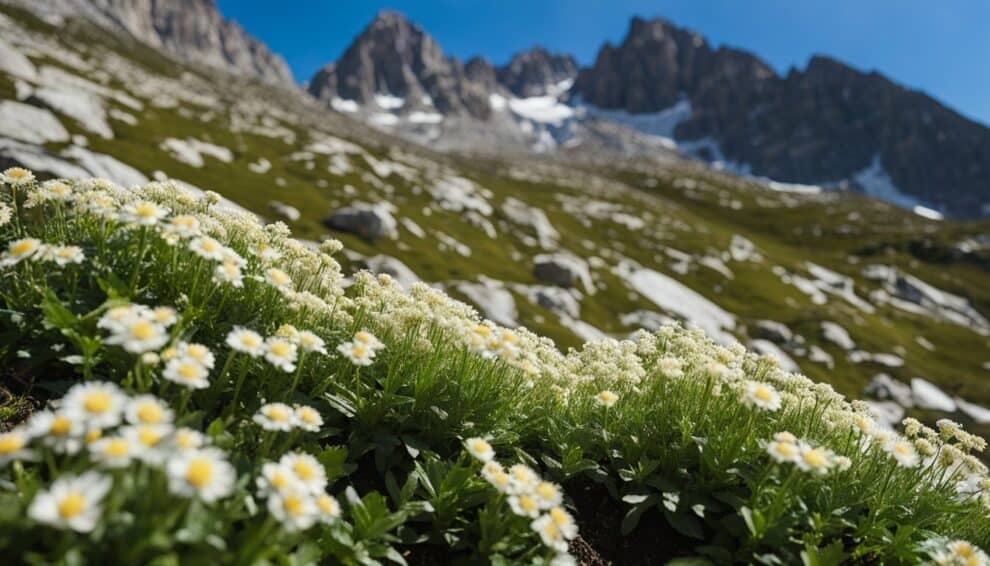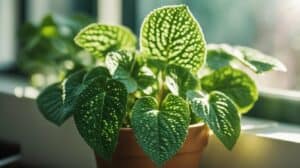Celmisia sessiliflora, commonly known as mountain daisy, is a beautiful and hardy perennial plant that is native to the mountains of New Zealand.
It is a popular plant among gardeners due to its attractive foliage and stunning flowers.
If you are a beginner looking to grow this plant, then this guide is for you.

Growing Celmisia sessiliflora requires some basic knowledge and care, but it is not difficult.
The plant prefers well-drained soil, plenty of sunlight, and moderate watering.
With the right conditions, it can grow up to 30cm in height and produce beautiful yellow flowers in the spring and summer.
In this article, you will learn everything you need to know to successfully grow Celmisia sessiliflora in your garden.
Understanding Celmisia Sessiliflora

Species Overview
Celmisia Sessiliflora, commonly known as Mountain Daisy, is a perennial plant that belongs to the Asteraceae family.
It is native to the alpine regions of New Zealand, where it thrives in rocky, well-draining soils.
The plant produces a rosette of leaves that are gray-green in color and have a felt-like texture.
The flowers are daisy-like and can range in color from white to pink or purple.
Mountain Daisies are popular garden plants due to their attractive foliage and delicate flowers.
They are relatively easy to grow and can add a touch of color to any garden.
However, it is important to note that they require specific growing conditions to thrive.
Natural Habitat
In their natural habitat, Mountain Daisies grow at high altitudes, typically above 1000 meters.
They prefer cool temperatures and are adapted to withstand harsh weather conditions, such as strong winds and heavy snowfall.
The plants are often found growing in rocky, well-draining soils, and can even grow in crevices and on cliffs.
Due to their natural habitat, Mountain Daisies require similar growing conditions in a garden setting.
They prefer full sun to partial shade and well-draining soil. The plants do not tolerate wet soil, so it is important to ensure that the soil is well-draining.
In addition, they require regular watering during the growing season and occasional fertilization to promote healthy growth.
In summary, understanding the natural habitat and growing requirements of Celmisia Sessiliflora is essential for successfully growing this beautiful plant.
With the right growing conditions, Mountain Daisies can thrive in a garden setting and add a touch of beauty to any landscape.
Cultivation Techniques

Soil Requirements
Celmisia sessiliflora, commonly known as mountain daisy, prefers well-draining soils that are slightly acidic.
A soil pH of 6.0 to 6.5 is ideal for this plant. The soil should be rich in organic matter and have good water retention capacity.
The addition of perlite or sand can improve drainage, which is important for preventing root rot.
Planting Procedures
It is best to plant Celmisia sessiliflora in the spring or fall. The plant can be propagated through seeds or cuttings.
To plant a seed, it should be sown on the soil surface and lightly covered with soil.
Cuttings can be taken from the stem tips and should be planted in a well-draining potting mix.
The plant should be watered immediately after planting and kept moist until it establishes.
Lighting and Temperature
Celmisia sessiliflora requires full sun to partial shade. It should be protected from strong winds, which can damage the delicate flowers.
The plant can tolerate a wide range of temperatures, but it prefers cool temperatures between 50-65°F (10-18°C).
It is important to protect the plant from frost during the winter months.
In summary, growing Celmisia sessiliflora requires well-draining soil, proper planting procedures, and adequate lighting and temperature conditions.
With the right care, this plant can thrive and produce beautiful daisy-like flowers.
Maintenance and Care
Watering Guidelines
Celmisia Sessiliflora requires moderate watering. The plant should be watered when the top 1-2 inches of soil are dry.
Overwatering can lead to root rot, so it is important not to let the plant sit in water.
It is recommended to water the plant in the morning to allow time for the leaves to dry before nightfall.
Fertilizing and Pruning
Fertilizing is not necessary for Celmisia Sessiliflora, but it can be beneficial to use a slow-release fertilizer once a year in the spring.
Pruning is also not required, but deadheading can help promote new growth and keep the plant looking tidy.
Pest and Disease Management
Celmisia Sessiliflora is generally a hardy plant and is not prone to many pests or diseases.
However, it is important to keep an eye out for aphids, spider mites, and powdery mildew. These can be treated with insecticidal soap or neem oil.
It is also important to remove any infected leaves or stems to prevent the spread of disease.
Propagation Methods

Celmisia sessiliflora is an alpine plant that is commonly grown in rock gardens and alpine troughs.
Propagating this plant can be done through seed propagation or division technique.
Seed Propagation
Growing Celmisia sessiliflora from seeds is relatively easy. The seeds should be sown in a well-draining soil mix and kept moist.
It is best to start the seeds indoors in late winter or early spring, and then transplant them outside in the summer.
To increase the chances of success, it is recommended to stratify the seeds for a few weeks before sowing.
This can be done by placing the seeds in a plastic bag with some moist sand and storing them in a refrigerator for a few weeks.
Division Technique
Propagation of Celmisia sessiliflora can also be done through division.
This technique involves separating the plant into smaller sections and replanting them in new locations.
To divide the plant, gently dig out the clump and separate it into smaller sections, making sure that each section has some roots attached.
Replant the sections in a well-draining soil mix, and water them thoroughly.
It is best to divide the plant in the early spring or fall when the plant is not actively growing.
This will give the plant time to establish itself before the next growing season.
By following these propagation methods, even beginners can successfully grow Celmisia sessiliflora and enjoy its beautiful mountain daisy blooms.
Frequently Asked Questions

What are the ideal growing conditions for Celmisia sessiliflora?
Celmisia sessiliflora, or mountain daisies, prefer cool temperatures and moist soil. They grow best in areas with partial shade and well-draining soil.
These plants can tolerate a range of soil pH levels, but prefer slightly acidic soil.
Can Celmisia sessiliflora thrive in cold climates?
Yes, Celmisia sessiliflora can thrive in cold climates. In fact, they are native to the mountains of New Zealand, where temperatures can drop below freezing.
However, they may need protection from extreme cold and frost.
What type of soil is best for cultivating mountain daisies?
Mountain daisies prefer well-draining soil that is slightly acidic.
A mix of peat moss, sand, and perlite can provide the ideal growing conditions for these plants.
It’s important to avoid soil that is too heavy or compacted, as this can lead to root rot.
How often should I water Celmisia sessiliflora plants?
Celmisia sessiliflora plants should be watered regularly, but not overwatered. The soil should be kept moist, but not waterlogged.
It’s important to allow the soil to dry out slightly between waterings to prevent root rot.
Are there any common pests or diseases that affect Celmisia sessiliflora?
Celmisia sessiliflora plants are susceptible to fungal diseases such as powdery mildew and rust. They may also be affected by aphids and spider mites.
Regular monitoring and treatment with organic pest control methods can help prevent these issues.
What steps should I take to propagate Celmisia sessiliflora successfully?
Celmisia sessiliflora can be propagated from seed or by division. Seeds should be sown in a well-draining soil mix and kept moist until they germinate.
Division should be done in the spring, and the new plants should be kept in a partially shaded area until they become established.














